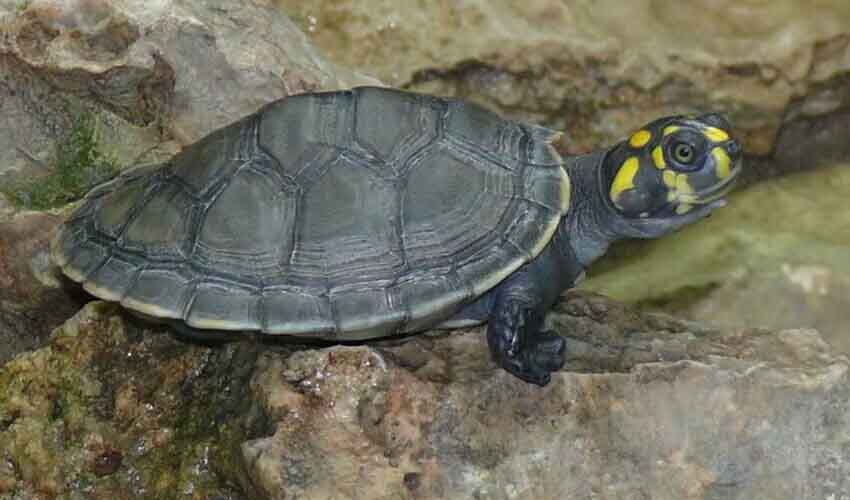Podocnemididae – American side-necked turtles
Efficient swimmers thanks to their round shells and shorter necks than other Pleurodira families
These turtles are primarily found in South America and parts of Central America, thriving in freshwater environments such as rivers, streams, and lakes. They are also known as the South American river turtles or side-necked turtles, distinguished by their unique method of retracting their necks sideways under the shell, rather than pulling it directly back into the shell like most turtles.
Most side-necked turtles are relatively small, with most species measuring under 20cm (8 inches) in length. This compact size makes them less conspicuous in their natural habitats, often overlooked in their surroundings. The skin color of these turtles varies widely, encompassing shades of tan, dark brown, grey, and black, which helps them blend into the aquatic environments they inhabit. A distinctive feature of these turtles is the top of their head, typically marked in black and varies in color from olive to brown, adding to their camouflage and overall aesthetic appeal.
Their diet undergoes a significant transformation as they transition from youth to adulthood. Young turtles exhibit a predominantly carnivorous diet, eagerly consuming water insects, small amphibians, fish, and other available animal matter. This high-protein diet supports their rapid growth and development during the early stages of life.
As these turtles mature and reach adulthood, their dietary preferences shift towards a more herbivorous regimen. Adult turtles consume more aquatic plants, although they continue to eat animal-based food, including water insects, small amphibians, or fish. This dietary shift reflects an adaptation to their changing nutritional needs and the availability of food resources in their environment.
Genera in this family
Home of the largest freshwater turtles from South America


